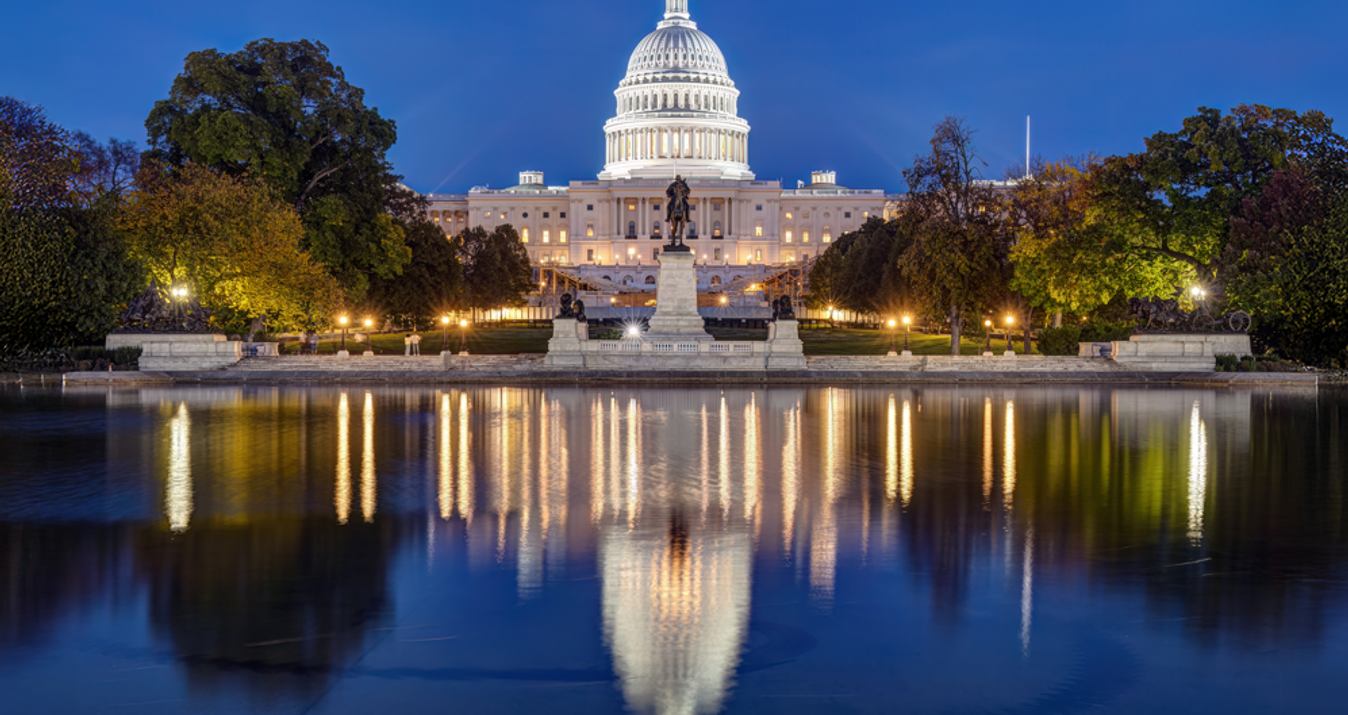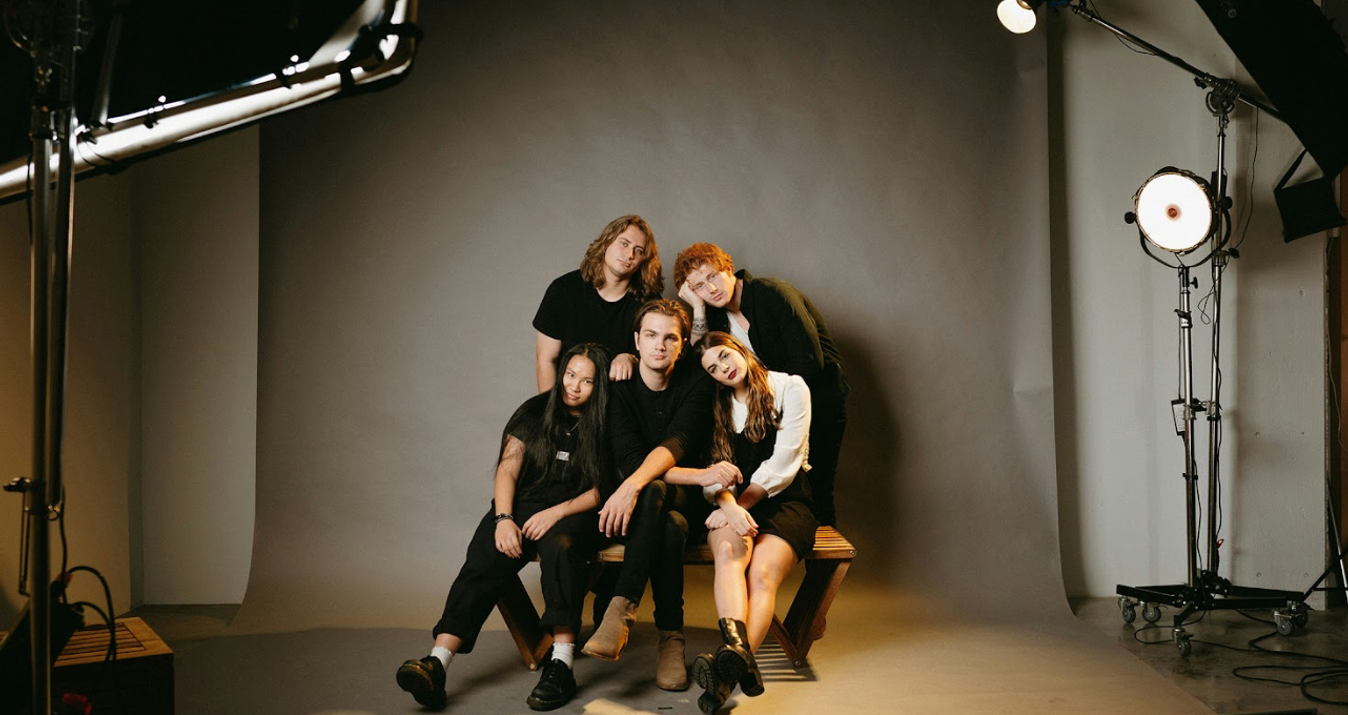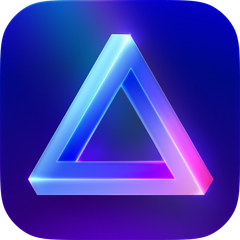Drone Photography: Must-Have Gear & Pro Tips
Last Updated on April 23, 2025
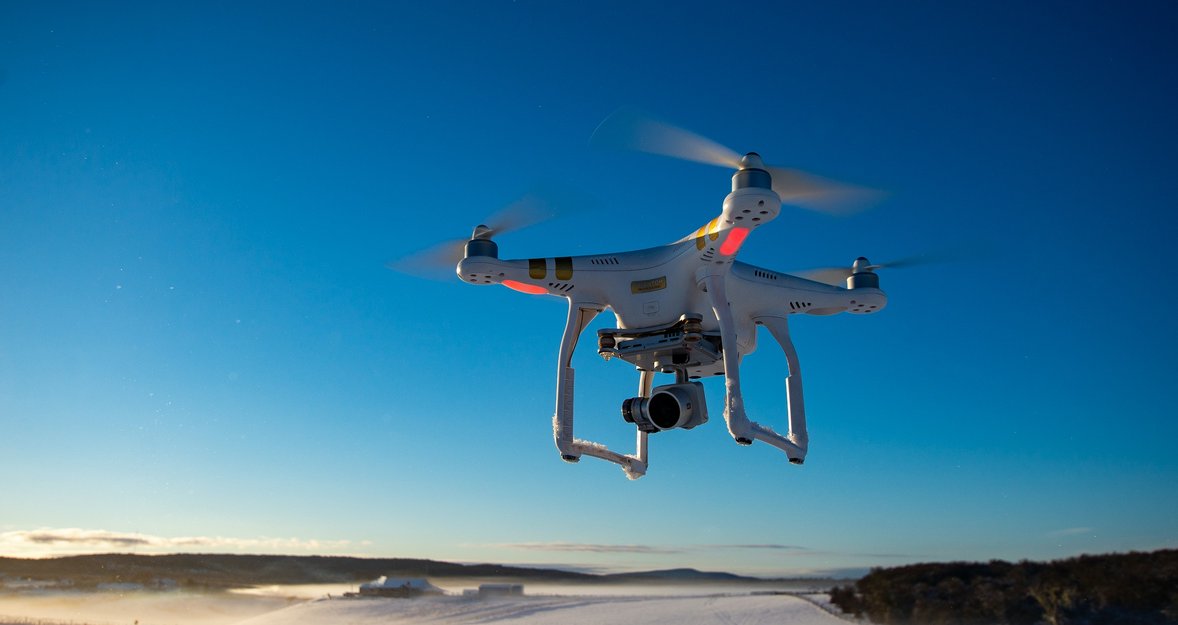
Drone photography isn’t just a hobby anymore — it’s a skill that can take your creative projects, business, or travel memories to an entirely new level.
Drones have emerged as a revolutionary development in photography and video production since the beginning of the 2010s. Modern technology allows novice photographers to record high-quality videos exploring impossible territory in photography and cinematography. A perfect drone shot requires superior software and sufficient knowledge to optimize drone features.
This article will explain how to use a drone camera to achieve superior photographic results.
Edit Your Drone Images Like a Pro with Luminar Neo
Learn MoreChoosing the Best Drone for Photography
Choosing the right drone comes down to balancing image quality, flight time, and ease of use for the kind of shooting you plan to do. Think about sensor size, gimbal stability, and whether you need automated modes for tracking or manual controls for more creative work — budget and legal limits will shape those choices.
Beginner-Friendly Drones for New Pilots
If you’re just starting and wondering how to get into drone photography, pick something light, reliable, and simple to repair.
1. DJI Mini 4 Pro — The Best Mini Drone (under 250g)-1547.png?q=85&w=840)
DJI Mini 4 Pro weighs less than 250 grams. The 4K camera delivers video recording at 100 frames per second and 12 MP and 48 MP photo resolution. Its camera system has rotational functions, shooting vertical content.
DJI Mini 4 Pro allows users to experience a maximum flight duration of 34 minutes. The omnidirectional obstacle-sensing system is a primary safety function. It monitors all directions to stop collisions with objects in flight.
How do drone cameras work? The ActiveTrack 360° subject tracking technology provides real-time target positioning info to users, enabling drone movement of 360 degrees around targets. The Waypoint path planning system enables users to set specific path markers, helping with repeated or complicated shooting requirements and simplifying more advanced autonomous flight execution.
The DJI Mini 4 Pro provides top-quality images, extended battery life, advanced detection and tracking abilities, and professional-level flight plan features.
2. Ryze Tello — Best Budget Starter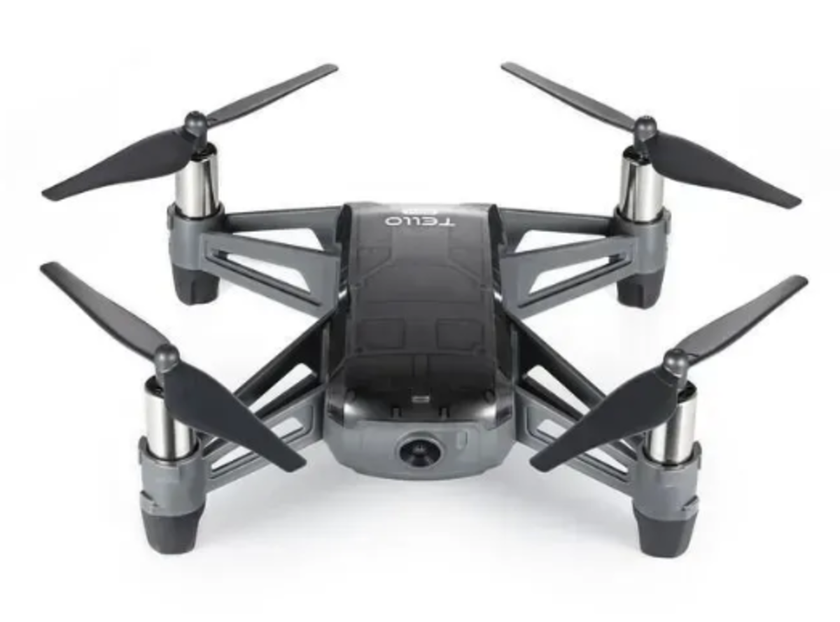
If you want to test the waters without a big investment, the Ryze Tello is a solid entry point. Designed in collaboration with DJI, it’s extremely compact (just 80 g) and simple to fly using a smartphone app. The 5 MP camera won’t compete with larger drones, but it’s good enough for casual aerial shots, social media clips, and learning how to control a quadcopter.
The Tello flies for about 13 minutes per battery and uses vision positioning sensors for stable hovering indoors and out. It also has fun preset flight modes (like flips and circle shots) that make it engaging to fly while teaching you the basics of orientation and camera framing.
For absolute beginners, the Tello is a budget-friendly way to practice flying and get comfortable with drones before upgrading to something more advanced like the Mini 4 Pro.
Mid-Range Drones for Growing Skills
Once you’ve mastered the basics, mid-range drones give you more power, smarter tracking, and better image quality without the bulk (or price) of pro gear. These models are ideal for creators who want to push their skills further:
3. Autel EVO Nano+ — The Best DJI Alternative (Mini Range)-6768.png?q=85&w=840)
The Autel EVO Nano+ maintains heavyweight values without exceeding 250 grams. The drone features a 4K camera with a 1/1.28″ 50MP CMOS sensor, allowing footage at 30 frames per second. The drone operates for 28 minutes as its top speed goes up to 54 km/h. A device used to capture aerial shots
Three-way obstacle sensors provide increased flight safety, and SkyLink video transmission supports stable connections with more than 10 km of range. Forward with SkyPortrait drone technology controls a camera system that automatically adjusts height and direction. Users can record real-time sounds with the SoundRecord function through the mobile app.
Dynamic Track from the drone system operates automatically to track subjects accurately. It provides users with precision following moving targets needed for cinematic sequences.
4. DJI Air 3 — The Most Versatile Drone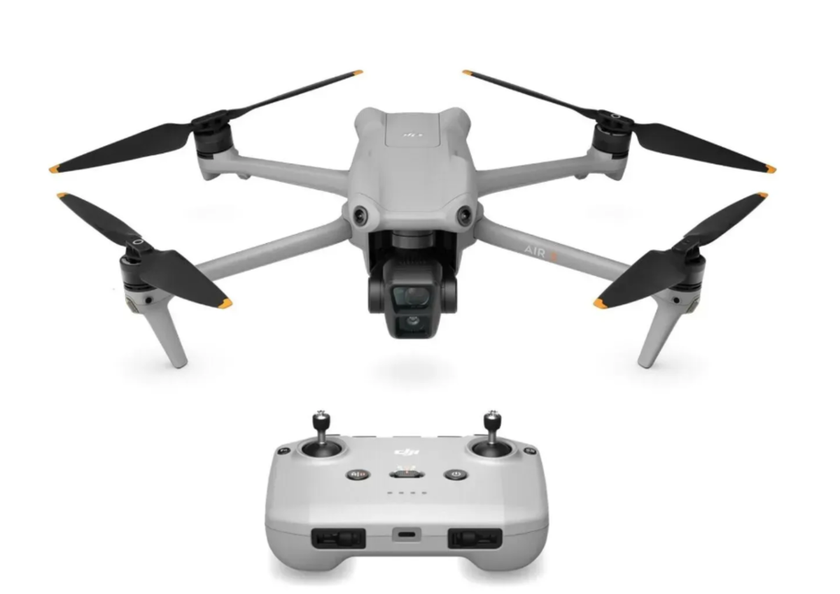
The DJI Air 3 delivers an upgrade from the Air 2S. It contains dual cameras that integrate a wide-angle lens with 24 mm and a telephoto lens that works with 70 mm focal lengths. These sensors enable users to record 4K videos at 100 frames per second and save 48 MP images.
The video transmission protocol OcuSync 4 provides up to 20 kilometers of flying range while maintaining stable connections. Marked by its 720-gram weight, the drone extends the operational time to 46 minutes due to the 4241 mAh battery system.
The drone precisely tracks moving subjects with ActiveTrack 360 and Spotlight and Point of Interest included in its FocusTrack subject-tracking technology. ActiveTrack 360 delivers real-time target location detection, letting you orient your drone 360 degrees in any direction for exciting filming possibilities.
Professional Drones for Advanced Creators
For commercial projects or when image quality is everything, pro-level drones deliver bigger sensors, longer flight times, and advanced shooting options. They’re the go-to choice for filmmakers, photographers, and professionals who need the very best:
5. DJI Mavic 3 Pro — The Best Camera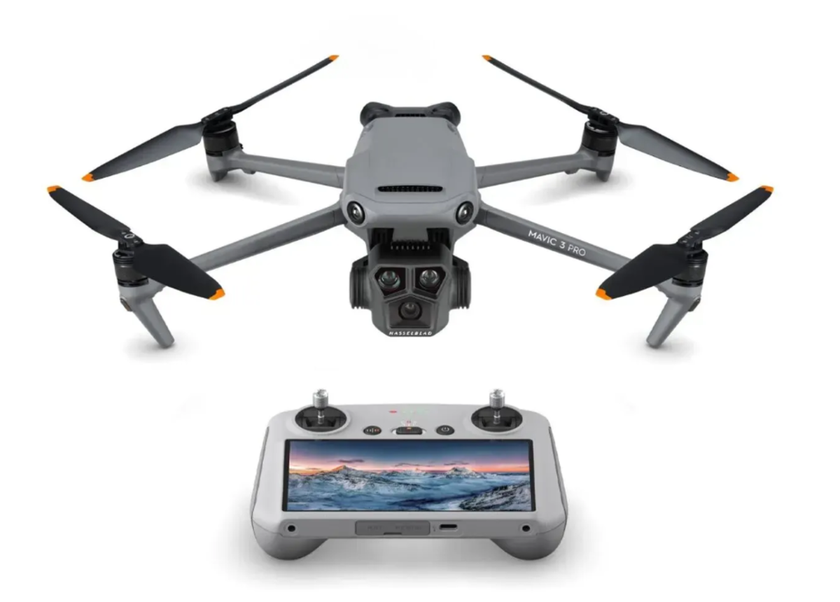
Top-tier drone DJI Mavic 3 Pro offers three built-in cameras with diverse focal lengths:
a main 20 MP Hasselblad CMOS 4/3 camera with a 24 mm focal length;
48 MP medium format camera with a 70 mm focal length;
12 MP camera with a 166 mm focal length.
The Mavic 3 Pro features omnidirectional obstacle sensing. This functionality allows drones to monitor surrounding space in every direction. The DJI Mavic 3 Pro enables users to create flight paths.
Content creators can benefit from a 43-minute flight duration operating the drone. This drone's extended flight duration guarantees that they do not face battery-related limitations. Through its O3+ video transmission system, operators can achieve a transmission distance as wide as 15 km while maintaining superior signal quality.
6. Skydio 2 / 2+ — Best for Autonomous Flight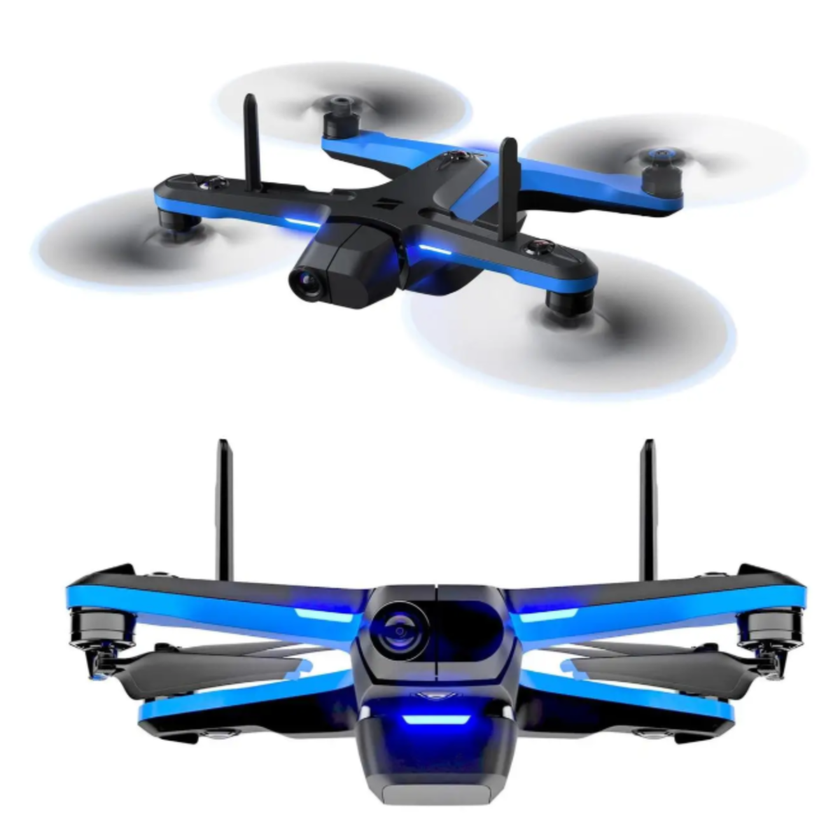
While DJI leads in optics, Skydio plays a different game. The Skydio 2 and 2+ drones are designed around autonomy and subject tracking. With their advanced AI and six 4K navigation cameras, these drones can detect obstacles in every direction and adjust flight paths in real time. The result? You can fly them confidently in environments that would challenge other drones — forests, urban areas, mountain trails.
This makes them especially popular with action sports creators: imagine mountain bikers, snowboarders, or runners who want dynamic tracking shots without hiring a pilot. The drone essentially becomes a self-flying cameraman, following your movement smoothly while dodging trees, cliffs, and other hazards.
While the camera itself doesn’t match DJI’s Hasselblad systems, it’s still solid — 4K video, HDR capabilities, and crisp footage for social media or YouTube production. For creators who care more about effortless autonomous capture than manual piloting or interchangeable focal lengths, Skydio is the gold standard.
Essential Gear for Drone Photography
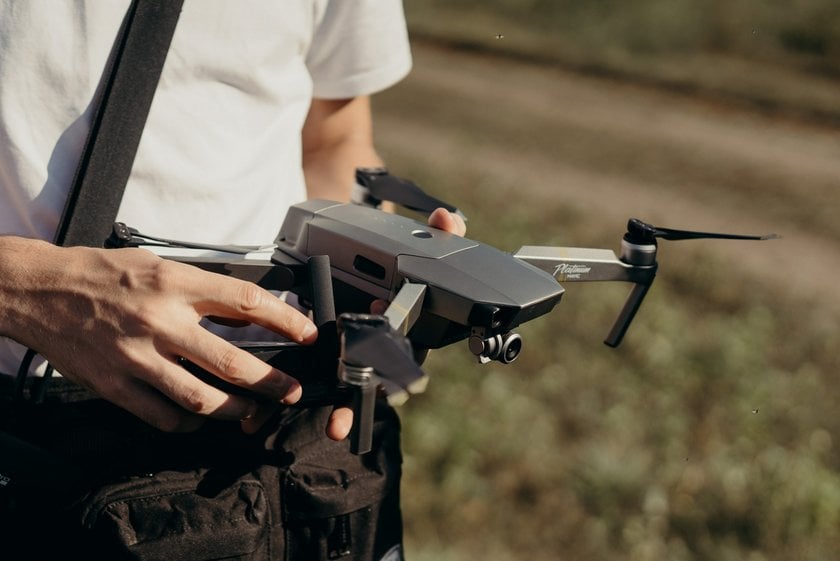
The drone is your device used to capture aerial shots, but add-ons make the real difference between a frustrating day and a productive one:
Extra batteries and a charging hub. Flight time is the #1 limitation in aerial work. For example, a DJI Air 3 lasts about 46 minutes per battery, while a DJI Mini 4 Pro averages 34 minutes. Carry at least three batteries and a DJI Charging Hub or a PowerOak portable bank if you’ll be off-grid.
ND filter set. Neutral-density filters help control shutter speed in daylight, especially for cinematic video. Brands like PolarPro and Freewell make kits sized for the DJI Mini, Air, and Mavic series. With them, you can shoot waterfalls at 1/50s or maintain motion blur in bright noon sun.
Padded case or modular backpack. Protecting your drone and gimbal is crucial. The Lowepro DroneGuard BP 250 fits a Mavic 3, controller, filters, and batteries in a compact setup. If you’re hiking, look at the PGYTECH OneMo Backpack, which has customizable dividers and rain protection.
High-speed SD cards. Don’t skimp here. For 4K or 5.4K video, you need UHS-I U3 or V30 minimum. Tested and reliable picks: SanDisk Extreme Pro 128GB UHS-I or Samsung Pro Plus 256GB. They prevent frame drops and corruption when recording high-bitrate video.
Propeller spares and multi-tool. A snapped blade is common after a tip-over landing. Always pack at least two sets of propellers (DJI and Autel sell originals) and a multi-tool like the Leatherman Wave+ for quick swaps.
Landing pad. Dust, sand, or tall grass can damage sensors or gimbals during takeoff/landing. The PGYTECH 75cm foldable pad is light, reflective for night flying, and gives a flat, clean base.
Tablet or large-screen phone with sunshade. A larger display makes learning how to use a drone camera far easier. Pair your controller with an iPad Mini 6 (fits DJI RC-N1 via mount) or a Samsung Galaxy Tab Active3 for Android pilots. Add a sunshade like the Hoodman Aviator so glare won’t ruin your framing on bright days.
Once your gear is set, the next step is applying smart flying habits. Here are some practical drone photography tips that make all the difference.
Edit Your Drone Images Like a Pro with Luminar Neo
Learn More5 Drone Photography Tips and Ideas

Drone photography offers endless creative possibilities, from sweeping landscapes to dynamic action shots. Here are some helpful tips and tricks to help you learn drone photography:
- Composition and flying techniques. Use the rule of thirds. Drone cameras can shoot at 30 fps (frames per second) or 60 fps for varying levels of quality. Some drones can live stream to a smartphone from four miles away. For added flexibility, some drones come with a 360-degree gimbal camera that moves freely in any direction.
- Start shooting in RAW. Did you know that drones can take pictures? Capturing images in this format ensures the data retains maximum quality potential, remains uncompressed, and offers greater editing flexibility later. RAW mode gains higher control to adjust elements such as exposure and white balance color.
- Choose a location and time. Use Google Maps and Google Earth to plan and identify shooting locations. Shooting during strong sunlight can cause reflections from bodies of water or structures. Golden hour is the right time as the light is softer, accentuating nature and buildings.
- Make sure your ISO is low. Unlike DSLR cameras, drone camera sensors are small, which means clicking or shooting at ISO 100 can cause noise and grain. We suggest always setting your ISO to 100. This allows you to capture sharper and cleaner images. Finally, don’t forget to change your shutter speed and aperture if available.
- Recommendations when flying drones. Be aware of hazards such as power lines, trees, and buildings. Maintain a safe distance from people and property. Make sure the batteries are charged. Stay away from airports and military bases. Keep your drone at least 25 feet (ca. 8 m) away from people and property.
Following these tips will help you enjoy drone photography while keeping yourself, others, and your drone safe.
Drone Registration and Legal Basics
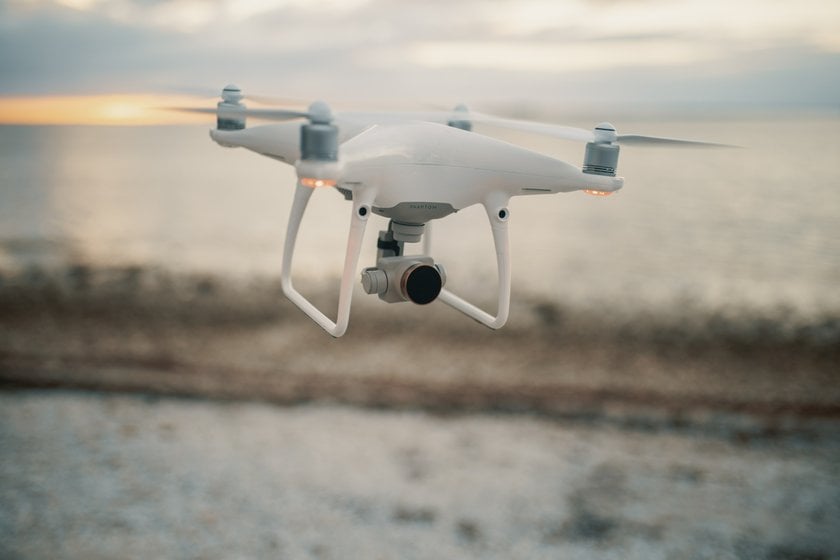
Registration, pilot certificates, and local rules aren’t bureaucracy for the sake of it — they keep people safe, protect your liability, and prevent your footage from getting you into trouble. Many rules are straightforward (register if your drone is above a weight threshold), while others depend on location (parks, city rules, airspace near airports). Treat legal prep as part of your gear bag: a quick check can save fines, confiscations, or canceled jobs.
- USA (FAA): Most drones over 0.55 lb (≈250 g) require registration. Recreational flyers need to pass the TRUST test; commercial pilots must hold the Part 107 Remote Pilot Certificate. Keep an eye on NOTAMs and use LAANC or the FAA tools to request controlled airspace authorizations near airports. National Parks generally ban drone flights.
- Europe (EASA + national authorities): EASA introduced a harmonized framework (the “open” category, 120 m / ≈400 ft typical limit), but member states still handle registration, liability, and some permissions. Many EU countries require operator registration and often enforce third-party liability insurance rules at the national level. For complex operations, you’ll look at “specific” category rules or a national Light UAS Operator Certificate (LUC).
While the details can feel overwhelming at first, once you’ve registered and know your limits, the process becomes second nature — like checking your batteries before takeoff.
Wrap-Up
If your next step is to learn how does a drone camera work in practical terms, take one focused flight and master three things: reliable pre-flight checks, one automated shot (like orbit), and one manual move (like a slow reveal). Those three moves will teach you more than a dozen random flights. For a final nudge: the best way to learn drone photography is to fly small, fail cheaply, and then upgrade gear to solve real limits you’ve discovered.

-1547.png?q=85&w=840)

-6768.png?q=85&w=840)




